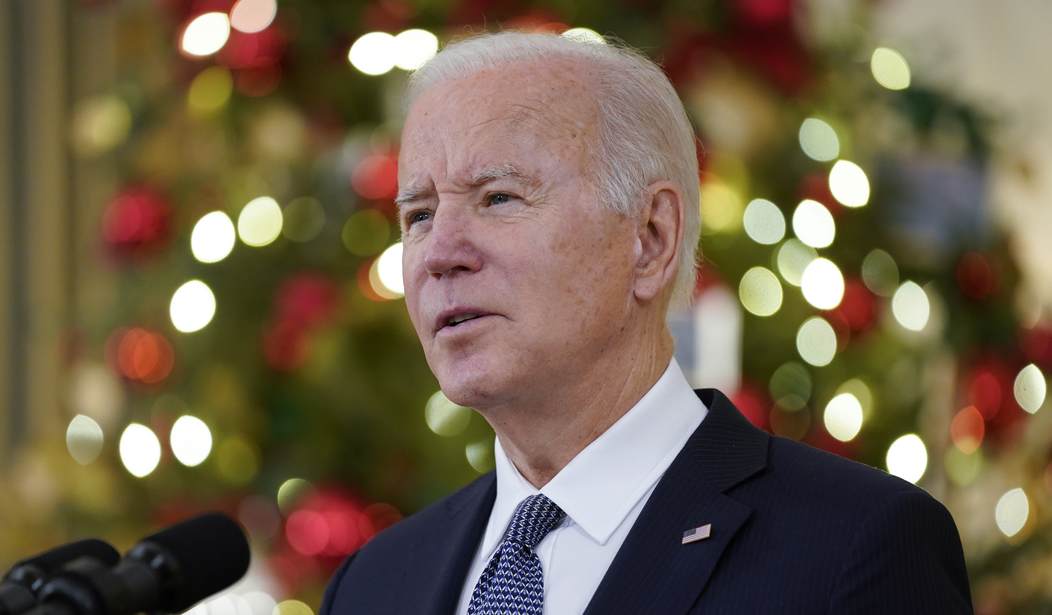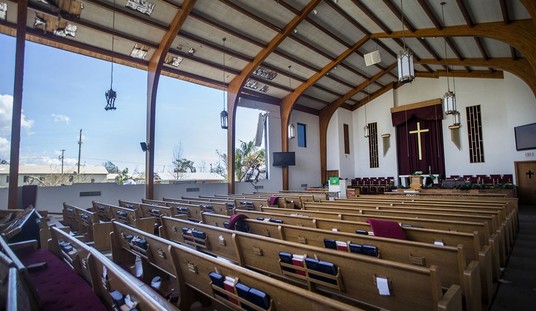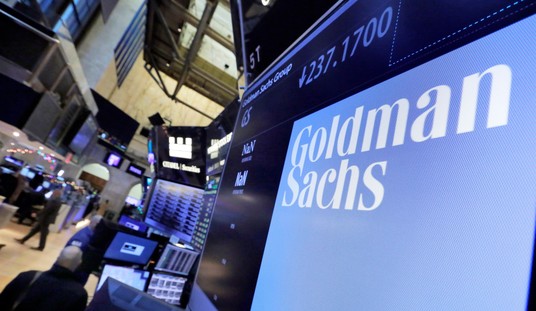And that’s not adjusting for the inflation that is clearly now impacting consumer behavior. The latest Census Bureau report on retail sales shows a -1.9% retreat in December, in the season where consumer shopping usually hits its zenith. And that strongly suggests that the upcoming Q4 GDP in this consumer-spending driven economy will look much less palatable for the Biden administration:
Advance estimates of U.S. retail and food services sales for December 2021, adjusted for seasonal variation and holiday and trading-day differences, but not for price changes, were $626.8 billion, a decrease of 1.9 percent (±0.5 percent) from the previous month, but 16.9 percent (±0.9 percent) above December 2020. Total sales for the 12 months of 2021 were up 19.3 percent (±0.5 percent) from 2020. Total sales for the October 2021 through December 2021 period were up 17.1 percent (±0.7 percent) from the same period a year ago. The October 2021 to November 2021 percent change was revised from up 0.3 percent (±0.5 percent)* to up 0.2 percent (±0.3 percent)*.
Retail trade sales were down 2.1 percent (±0.4 percent) from November 2021, but up 14.4 percent (±0.7 percent) above last year. Gasoline stations were up 41.0 percent (±1.6 percent) from December 2020, while food services and drinking places were up 41.3 percent (±4.0 percent) from last year.
The year-on-year numbers look better, but take those with a grain of salt — two, actually. First, the comparison is made against the pandemic Christmas season prior to vaccines being available, when consumer spending was dropping off so low that Congress and Donald Trump pushed through another stimulus package to goose the economy. Joe Biden then insisted on another three months later, which turned out to be the catalyst for a major inflationary wave.
That’s the second grain of salt to consider. The retail sales reports do not adjust for “price changes,” or what we call inflation. Year-on-year inflation overall in December came to 7%, but was much higher in some of the retail categories, especially food and fuel. That 16.9% increase looks like it should probably be halved, at least, in consideration of inflation, not to mention that it’s based on a historically lean retail season.
The American economy relies heavily on consumer spending. Any hiccup to retail sales will have a large impact on the economy, investment decisions, and those have other ripple effects. That’s especially true when downturns come as a surprise, as this apparently did:
Retail sales fell much more than expected in December as surging prices took a big bite out of spending, the Commerce Department reported Friday.
The advance monthly sales report to close out the year showed a decline of 1.9%, considerably worse than the Dow Jones estimate for just a 0.1% drop.
Excluding autos, sales fell 2.3%, a number that also fell well short of expectations for a 0.3% rise.
In addition to the weak December numbers, the November gain was revised down to 0.2% from the initially reported 0.3% increase.
Considering that the sales numbers are not adjusted for inflation, the data point to a slow ending to what had otherwise been a strong 2021 in which sales rose 16.9% from the pandemic-scarred 2020.
Remember that big gain in October? Retail sales gained 1.8% month-on-month, again not adjusted for inflation, and the White House claimed that the consumer spending showed that actual growth far outstripped the impact of inflation. I wondered at the time whether this might have been a consumer reaction to the supply-chain crisis and simply the shifting of demand up from December to ensure deliveries before Christmas. The Wall Street Journal sees the same dynamic in retrospect:
Many holiday shoppers heeded warnings about shipping delays, pushing a large share of the season’s usual gains earlier in the year. Sales were down broadly across spending categories in December, with online sales dropping sharply by 8.7%.
Electronics stores declined by 2.9% over the previous month in December, while furniture and home stores dropped by 5.5%. Restaurant and bar sales dropped by 0.8%. Auto dealers saw a decline of 0.7%.
That all but made this holiday season a wash. The final retail sales numbers for October-December are +1.8%, +0.2%, and -1.9%, respectively. This holiday season apparently created almost no upward momentum in Q4 for consumer sales. And next year already doesn’t look good, the WSJ notes:
The robust annual growth in 2021, despite the December decline, is a reflection of the torrent of consumer spending that has followed in the wake of depressed sales the prior year during the worst economic period of the Covid-19 pandemic. Retail businesses aren’t likely to see the same pace of growth this year, economists say. Consumer savings has come down from high levels, and the Omicron variant is creating fresh disruptions and keeping patrons away from restaurants and bars.
In other words, we’re tiptoeing closer to a recession than toward significant growth outside of inflation already. That will complicate the Federal Reserve’s response to this massive inflationary wave, which most expect to be a robust increase in interest rates in the next several meetings. That could help tame inflation, but it would almost certainly now push the economy into a significant recession, adding to the Biden administration’s political woes. They can hardly afford to sit on their hands while stagflation begins to loom over the American economy, but it’s clear that all of their choices are going to be bad — and that 2022 will not be a happy year for American households.








Join the conversation as a VIP Member